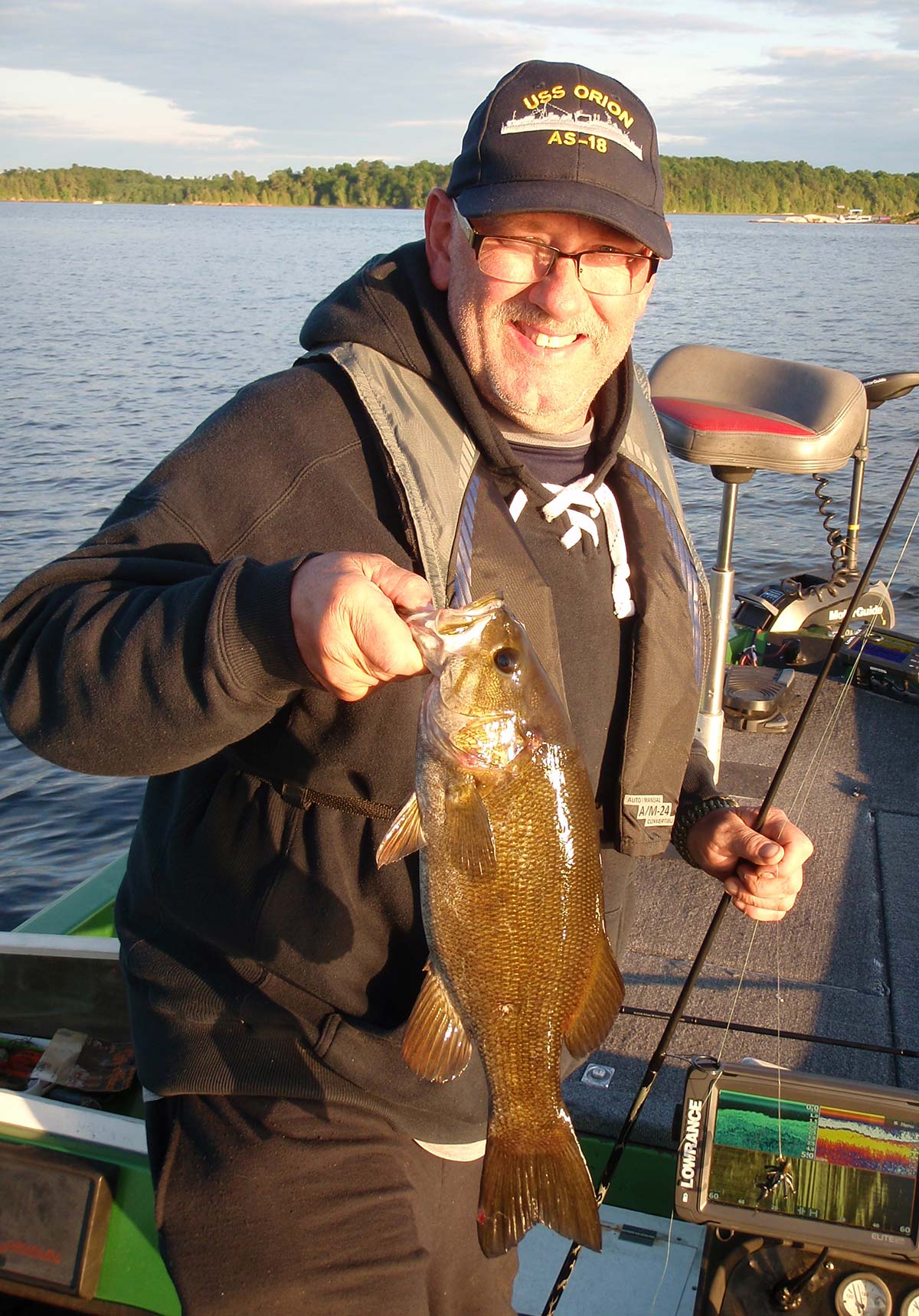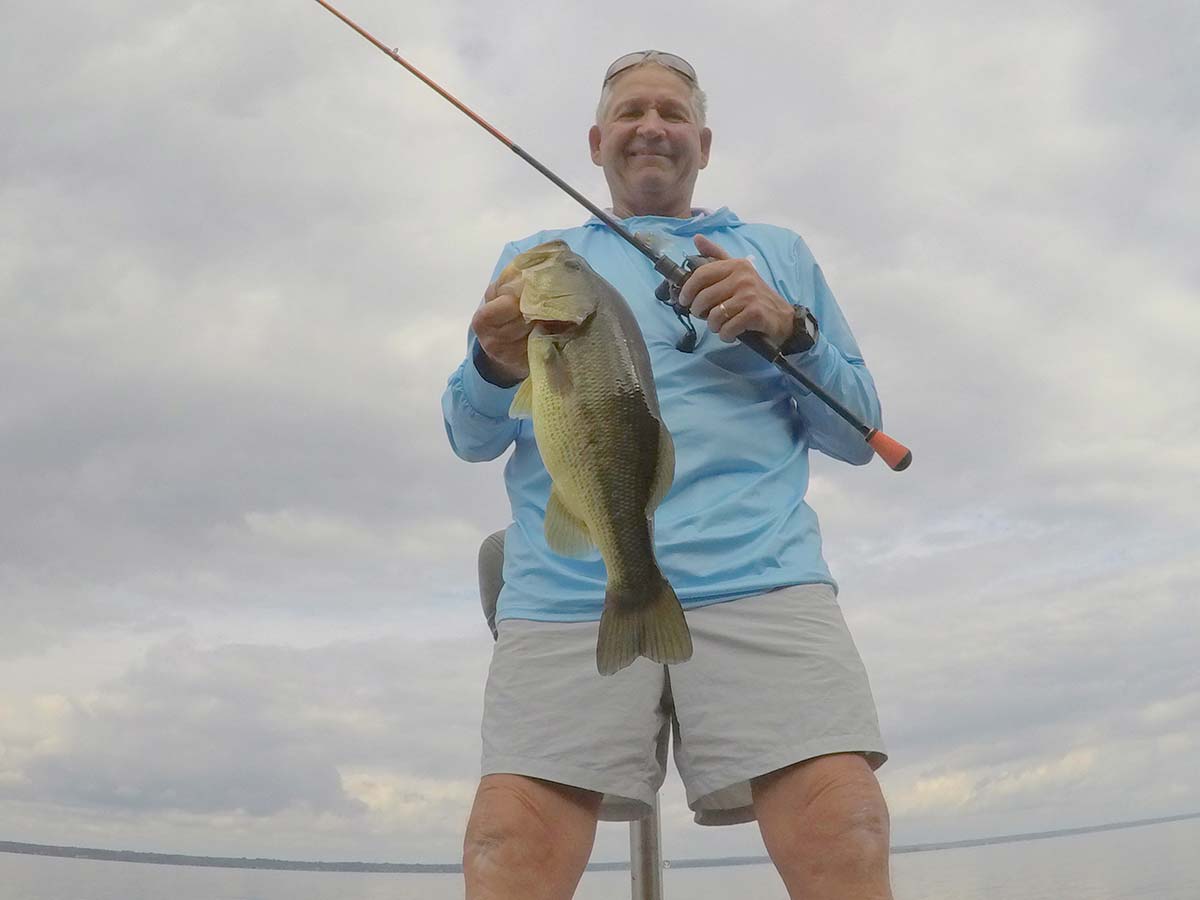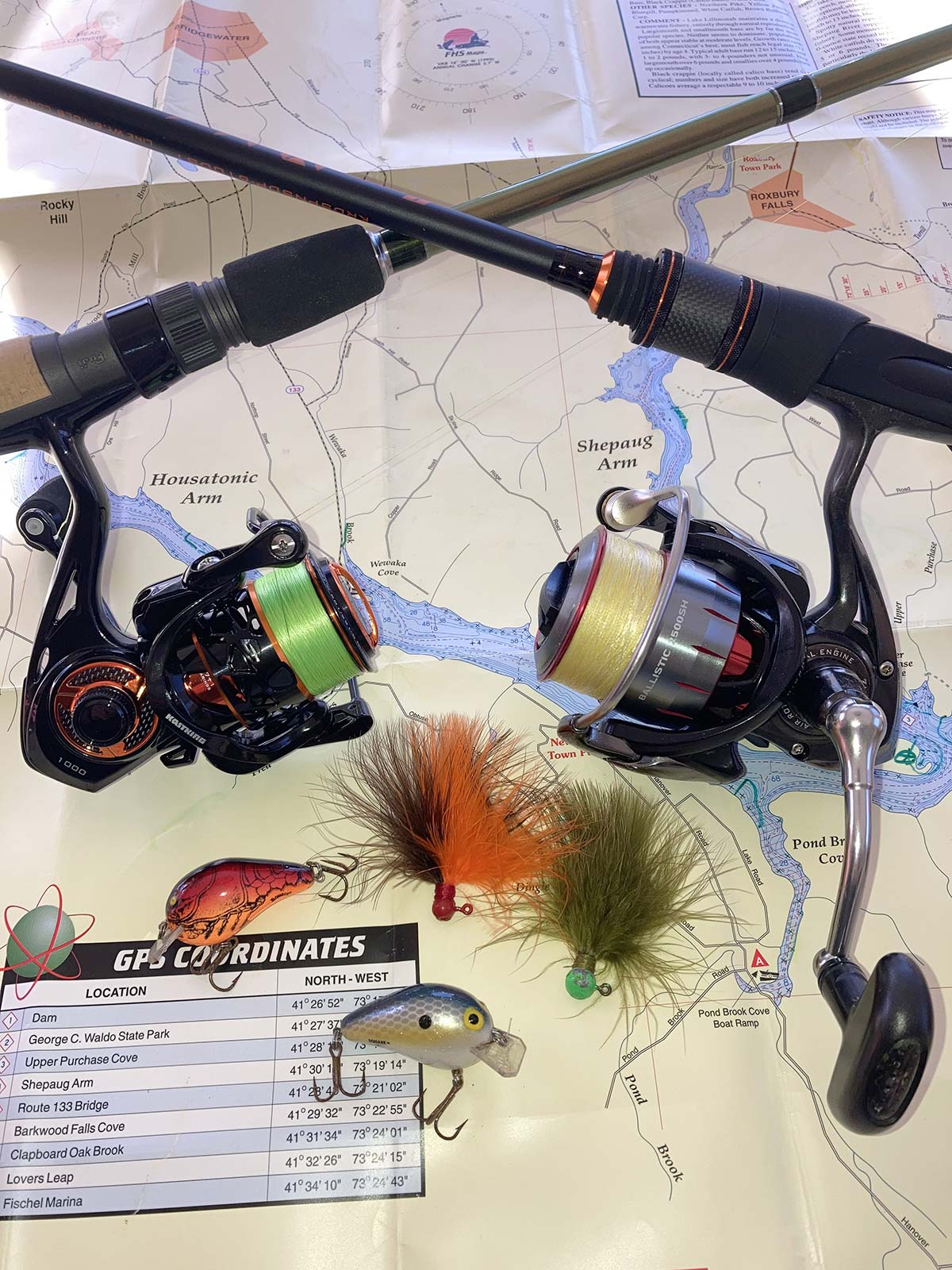
Scale down for spring sweetwater bass.
Its early spring and the water is still below 50 degrees in most areas. Bass have already begun to feed and you want to get in on the action. For this time of the year, nothing beats smaller profile baits to get the fish chomping. Whether you are targeting largemouths or smallies, these baits will get the job done. Let’s take a look at some of my favorite baits for springtime action. Early spring is prime time for smaller baits, but as the season gets further down the road do not overlook smaller baits as they may save your day, especially after a cold front or major weather change.
Finesse Gear
Before you can hit the water and try to finesse a bass, you might want to rethink your arsenal. This is not summer or fall where bigger sticks and heavier line may be needed. Not that you can’t catch big fish on light lines, but the key is the bait looking as natural as possible. Heavier lines will drag a bait down, making it sluggish and not perform to its max.
I have been playing with BFS baitcasting reels, which is a bait finesse system (BFS). These reels have a special shallow, drilled out/ultralight, spool and combined with light-action rods, throwing lures weighing less than approximately 5 to 7 grams (3/16 to 1/4 ounce and below) is quite easy. However, for the most part, I use a light spinning rod rated for 4 to 10-pound test, matched to a Daiwa Ballistic or KastKing Carbon Zephyr reel in size 2000 to 3000. On the line end, I always use braid as the main line, and these days I use KastKing 13X in 6-pound test, with Sufix 832 and Power Pro SSV2 being great options as well. Line is always a personal choice. The bottom line is fish with the braid you feel the most comfortable with. On the color end, bright, hi-vis colors are a must. Finesse fishing requires a lot of line watching rather than the tug of a bite. Bright lines make it much easier. On the tail end, a good quality fluorocarbon leader in 4 to 6-pound test, tied in with a Uni-To-Uni Knot is the way to go.

Baits For Bass
For baits, the number one early season bait that probably works better than any other is a small hair jig. A hair jig replicates a lot of small, early season fry, small insects and worms. These are the forage bass are slurping down, trying to put a little weight on before getting ready for the spawning period. If you read The Fisherman regularly, then you probably saw John Paduano’s piece in the February Edition on the 1/32-ounce marabou jig. In the article, which I totally agree with is how to work these small jigs. John suggests you keep the jig close to the bottom and keep your jigs to about one foot or less. You are imitating smaller bait, so subtle is better than a lot of movement.
Next up would be smaller crankbaits in fry type colors or red crawfish. These baits can be slowly crawled along the bottom kicking up dirt, or banging off early grass lines and stumps. I like to make as long a cast as possible, then work the bait back at various speeds. I use these a lot in the spring as this is the time when crawfish are coming out of the mud and scurrying about. Smaller crankbaits dragged along the bottom kicking up dirt is a calling card for bass to get an easy meal. Make sure your “bug” is banging the bottom, and ricocheting off any structure close to the bottom.
The third bait in my arsenal for early season bass is a 2.8 Keitech Fat on a ¼-ounce swing head and 2/0 hook. This bait is also a great search bait. I like to drop this bait onto underwater structure like rock piles and reel super slow, making sure it stays in contact with the structure. If your bait is not losing paint, then you are not banging the rocks enough. You will get very light bites with the bait, so my suggestion is, if you think it is a bite, snap the rod tip to start the hookset. If it’s a fish, snap the rod again to ensure a good set.

Best Spots
If you have a boat, early season bass action off Long Island can be red hot, especially in some of the deeper lakes in Connecticut, or the lower New York reservoirs. Candlewood Lake in Connecticut always produces “good” fish in April, with some tournaments seeing 20-pound bags of fish or better needed to win.
Back on Long Island, the shallower bodies of water will produce as soon as the ice leaves for good. The water will still be in the 45 to 50-degree area more than likely so try and fish the side of the lake that has seen the most sun by 3 in the afternoon. This side will easily be 2 to 3 degrees higher, which could equate to a great bite.
In the deeper lakes—Ronkonkoma and Fort Pond, I like to fish the drop-offs close to a feeder creek or water run-off from early season rains. For the most part, as we do not have a large supply of crawfish I will opt for the small hair jigs and Keitech swimbaits. These baits will work well on any largemouth in the lakes we have, with the smallies in Fort and Ronkonkoma also wanting a piece of them as well.
Spring is here and the freshwater fishing for bass on Long Island and in areas just north and west of the island are primed and ready for some great action. Get out the light tackle spinning gear or BFS and hit the water. In the spring, you could land the largest bass of the season, especially on Long Island!


